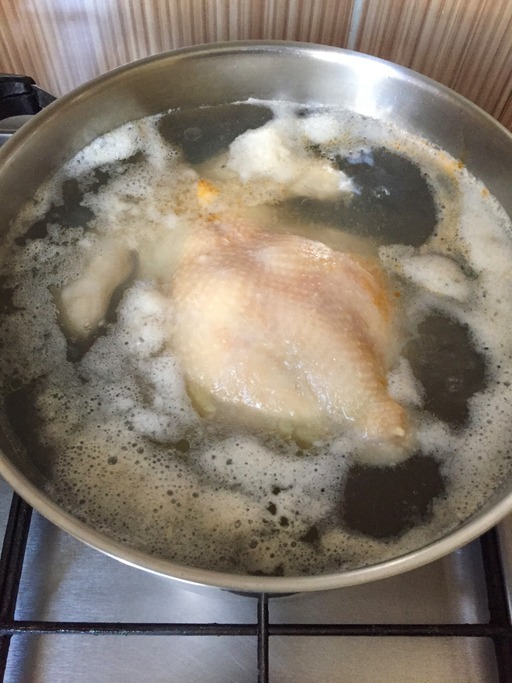ADVERTISEMENT
Skimming is an easy and quick way to manage the foam without any major changes to your cooking process. This works well if you’re making a soup, broth, or stew and want a cleaner, clearer liquid.
#### 3. **Add a Bit of Acid**
Adding a small amount of acid, such as vinegar or lemon juice, to the boiling water can help reduce foam formation. The acid helps to break down the proteins in the chicken more gently, preventing them from creating a large, frothy mass.
**How to Use Acid**:
– After you’ve added the chicken to the pot of water, stir in about **1-2 tablespoons of vinegar** or **the juice of half a lemon**. This can be added right at the beginning of the cooking process.
– The acid will help to keep the proteins from rising too aggressively to the surface and creating too much foam.
This method works especially well when making broths or stocks, as the acidity helps clarify the liquid and provides a slight tang that can enhance the flavor.
### Other Tips for Boiling Chicken Without Excessive Foam
– **Cook on Low Heat**: Boiling the chicken at too high a temperature can cause excessive foam and scum to form quickly. Instead, bring the water to a boil and then reduce the heat to a simmer. A gentle simmer will allow the chicken to cook evenly without creating an excessive amount of foam.
– **Use Fresh Water for Boiling**: If you’re cooking a large quantity of chicken, consider using fresh water for each batch. This can help keep the foam at bay by diluting the proteins and impurities more effectively than reusing the same water multiple times.
– **Cover the Pot**: While this isn’t a foolproof method, covering the pot partially with a lid during cooking can help trap some of the heat and moisture, which can prevent rapid foam formation.
### Conclusion: Foam Is Normal, But Manageable
The foam that forms when boiling chicken is a natural result of proteins, fat, and impurities being released into the water. While it’s harmless, it can affect the appearance and clarity of your dish. By using simple methods like blanching, skimming, or adding acid to the water, you can easily manage or prevent the foam for a cleaner, more appetizing meal.
So, next time you boil chicken, you’ll know exactly what’s causing the foam and how to deal with it, ensuring your dish turns out beautifully every time. Happy cooking!
ADVERTISEMENT
